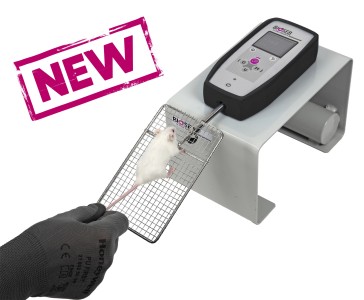Authors
J.J. Luszczki, M.K. Trojnar, M.P. Trojnar, Z. Kimber-Trojnar, B. Szostakiewicz et al.
Lab
Medical University, Department of Pathophysiology, and Institute of Agricultural Medicine, Department of Physiopathology, Lublin, Poland.
Journal
Canadian Journal of Physiology and Pharmacology
Abstract
To assess the effect of 3 calcium channel antagonists (amlodipine, diltiazem, and verapamil) on the anticonvulsant action of topiramate (a new generation antiepileptic drug) in the mouse maximal electroshock seizure (MES) model. Amlodipine (20 mg/kg) significantly enhanced the anticonvulsant activity of topiramate in the MES test in mice, reducing its ED50 value from 54.83 to 33.10 mg/kg (p < 0.05). Similarly, diltiazem (5 and 10 mg/kg) markedly potentiated the antiseizure action of topiramate against MES, lowering its ED50 value from 54.83 to 32.48 mg/kg (p < 0.05) and 28.68 mg/kg (p < 0.01), respectively. In contrast, lower doses of amlodipine (5 and 10 mg/kg) and diltiazem (2.5 mg/kg) and all doses of verapamil (5, 10, and 20 mg/kg) had no significant impact on the antiseizure action of topiramate. Pharmacokinetic verification of the interaction of topiramate with amlodipine and diltiazem revealed that neither amlodipine nor diltiazem affected total brain topiramate concentration in experimental animals, and thus, the observed interactions were concluded to be pharmacodynamic in nature. The favorable combinations of topiramate with amlodipine or diltiazem deserve more attention from a clinical viewpoint because the enhanced antiseizure action of topiramate was not associated with any pharmacokinetic changes in total brain topiramate concentration.
BIOSEB Instruments Used
Grip strength test (BIO-GS3)
Source :
http://www.ingentaconnect.com/content/nrc/cjpp/2008/00000086/00000003/art00006

 Douleur - Allodynie/Hyperalgésie Thermique
Douleur - Allodynie/Hyperalgésie Thermique Douleur - Spontanée - Déficit de Posture
Douleur - Spontanée - Déficit de Posture Douleur - Allodynie/Hyperalgésie Mécanique
Douleur - Allodynie/Hyperalgésie Mécanique Apprentissage/Mémoire - Attention - Addiction
Apprentissage/Mémoire - Attention - Addiction Physiologie & Recherche Respiratoire
Physiologie & Recherche Respiratoire




































 Douleur
Douleur Système Nerveux Central (SNC)
Système Nerveux Central (SNC)  Neurodégénérescence
Neurodégénérescence Système sensoriel
Système sensoriel Système moteur
Système moteur Troubles de l'humeur
Troubles de l'humeur Autres pathologies
Autres pathologies Système musculaire
Système musculaire Articulations
Articulations Métabolisme
Métabolisme Thématiques transversales
Thématiques transversales Congrès & Meetings
Congrès & Meetings 